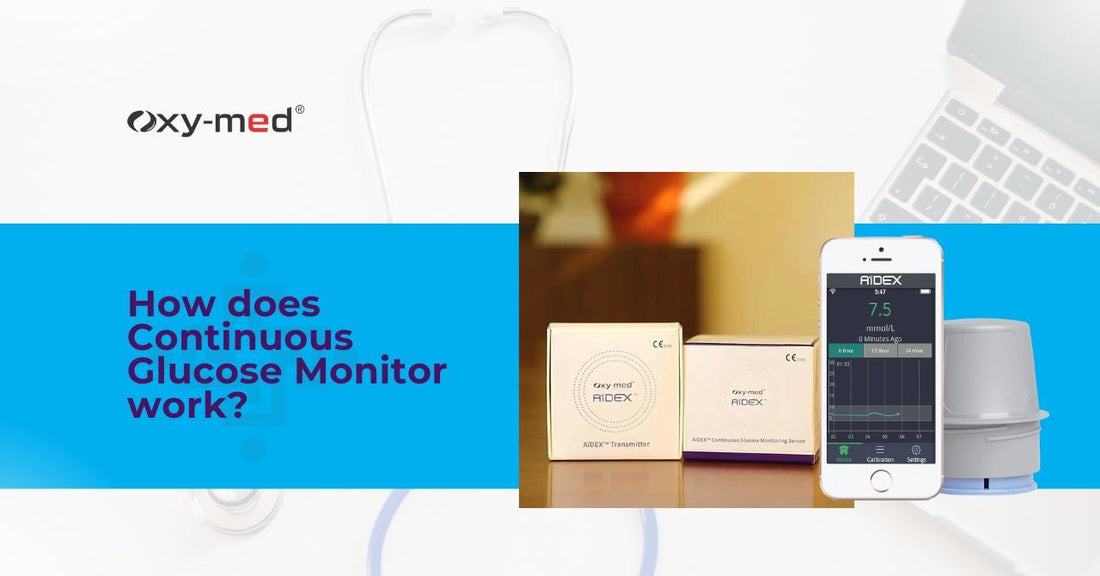How does a continuous glucose monitor work and What are the pros and cons of a continuous glucometer
Continuous Glucose Monitor
Blood sugar levels in the body are monitored and recorded using a device called a continuous glucose metre. It is a medical device for at-home use that eliminates the from undergoing finger-prick tests and continuously records your body's glucose levels every five minutes.
How does a continuous glucose monitor work?
A sensor, a transmitter, and a monitor will all be included in the continuous glucose monitor set (handheld device). A monitor is a gadget that lets you share your report with others and gives you notifications.
Typically, the sensor is attached to the abdomen or the arm. The sensor is connected to the transmitter. Your blood sugar levels are continuously tracked and checked every five minutes. The report is transmitted to a different handheld device.
What are the pros of a continuous glucose monitor?
It includes monitoring you 24/7.
Individuals who are diabetic need to constantly check their blood sugar levels to see if their body's glucose levels are stable and also being maintained. CGM devices are an excellent source of technology for continuous monitoring.
Automatic Graphs and Trends
CGM devices automatically generate simple graphs by comparing past readings and trends in glucose levels. This facilitates immediate analysis of the blood sugar level patterns and enables modifications to be made as early as possible to reduce hazards in the future.
Blood-free tests
It is inefficient and unpleasant to constantly prick your finger to check your blood sugar levels. In the past, finger-prick tests were used, but the results were only available once. Pricking your finger every five minutes to check your blood sugar levels is terrifying. CGM devices provide painless and bloodless blood sugar monitoring.
Simple to use
The CGM device is usually placed against the skin on your arms or abdomen. It is simple and effortless to operate the device. The sensor continuously records the body's glucose levels and shows the data on the designated display or app. Similar to how you check your phone's notifications, you can check the trends.
Life-saving alerts during high and low sugar levels:
CGM devices are trusted by diabetics and those who care for them since they inform the user if their blood sugar levels fluctuate and do not follow the desired healthy patterns. The alerts assist in monitoring the person's blood sugar levels and encouraging fast action to prevent further problems.
Helps in optimizing your diet.
Optimizing your diet is encouraged by the graph that shows the changes and patterns in your blood sugar level. It demonstrates how your eating patterns and physical activity affect your blood sugar levels.
Increased well-being:
The user can determine how much insulin is required by the body for people with type 1 and type 2 diabetes based on the evidence that CGM devices lower HbA1C levels and decrease the frequency of hypoglycemia events.
Decrease in frequent hospital visits
The user can determine how much insulin is required by the body for people with type 1 and type 2 diabetes based on the evidence that CGM devices lower HbA1C levels and decrease the frequency of hypoglycemia events.
Cons of The Continuous Glucose Metre
Despite the fact that CGM devices have no substantial drawbacks, there are a few from the users' point of view.
Replacing the sensor every time at a different place is annoying
Every week for 14 days, the CGM sensor needs to be changed. The sensor requires additional attachment and creates a mark on your body. Adhering the CGM to a new, comfortable location on the body can be difficult for those with smaller bodies.
Sensor glue could be allergic to a few people
Since the sensors are adhesives and are left on the body 24 hours a day, seven days a week, for 10 to 15 days, the glue may cause an allergic reaction in the user, causing them to scratch or feel the need to remove the sensor.
Overwhelming access to data leads to the overconsumption of information.
A person may become concerned about their blood sugar levels if they have too much access to information about their body and consume it continuously. Even regular alarms can occasionally give rise to anxiety about accessing too much information. It makes the person feel distressed mentally.
Conclusion
Home healthcare has become efficient and stress-free thanks to continuous glucose. It is a dependable tool for individuals who are unable to be near and watch over their loved ones all the time. The caretaker's job has become hassle-free because of the user-friendly CGM devices, and they feel comfortable leaving their parents or family's house and going to work.







